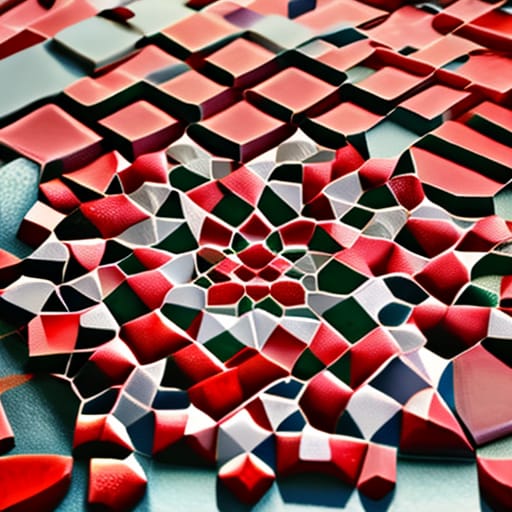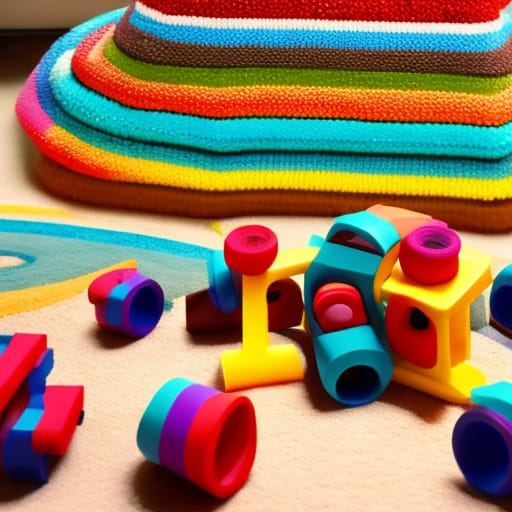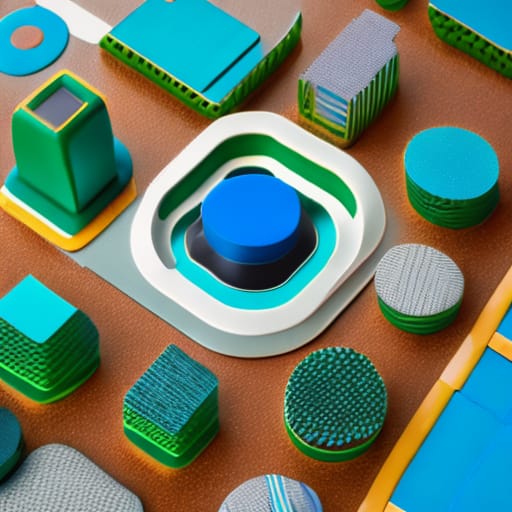Magnetic building blocks are a beloved children’s toy that have endless educational and creative potential. These ingenious blocks feature magnets embedded within, allowing them to attach to each other and form various two- and three-dimensional structures. With no need for interlocking pieces or connectors, magnetic building blocks inspire open-ended building fun while supporting key developmental skills.
This comprehensive beginner’s guide will explore the joys of magnetic block play. Discover the many benefits of these mesmerizing STEM toys, from promoting spatial reasoning and problem-solving to fueling imagination and sensory learning. Learn safety best practices, see product recommendations for magnetic tiles and blocks, and even get a tutorial for making your own DIY magnetic blocks at home.
Whether buying your first set for a toddler or looking to take magnetic building to the next level, this article has everything needed to unlock these blocks’ full play and education power!
Why Choose Magnetic Building Blocks?
Before diving into the specific perks, let’s cover the basics: what are magnetic building blocks and why choose them over other building toys?
Magnetic blocks are plastic building bricks or tiles with embedded magnets that allow them to connect. This magnetic adhesion means no interlocking edges, connectors, or other fasteners are required during the building process.
These captivating building sets have clear advantages over classic building blocks:
- Easier and more intuitive for younger kids to assemble basic structures
- Enable dynamic “builds” that can be easily shifted and changed
- Allow for effortless deconstruction and rebuild of creations
- Promote open-ended play without prescribed build guides
- Inspire discovery of patterns, cause-and-effect, and geometry concepts
- Feature mesmerizing magnetic power to engage and delight kids
With benefits like these, it’s easy to see why magnetic building blocks are a top choice for fostering early STEM skills and creativity.
Top Magnetic Building Block Brands
The magnetic block category has exploded with diverse brands and products. Before providing recommendations, here’s an overview of major manufacturers:
Picasso Tiles focuses on magnetic building tiles in creative shapes. Their products introduce kids to geometry through triangles, squares, and unique forms.
Magna-Tiles pioneered magnetic building with its high-quality interlocking shapes. This brand emphasizes mathematical thinking and offers deluxe marble maze sets.
MagFormers creates incredible STEM builds leveraging triangles and diamonds. This brand is known for magnified geometric patterns.
MyFamilyBuilders features a curated collection of magnetic bricks, waffle blocks, and chunky planks to build families and scenes. Their sets spark storytelling.
Fun with Magnets offers budget-friendly starter magnetic blocks supporting freeform building. Their bright colors and approachable price make these a top intro pick.
With all the options, here are two sure-bet recommendations:
MyFamilyBuilders Magnetic Building Blocks
- 48 brightly colored magnetic blocks
- Includes uniquemagnetic “planks” for easier building
- Promotes character and scene creation
Fun with Magnets Magnetic Building Blocks
- 56-piece starter set
- Classic square magnetic blocks
- Bold primary colors
Both quality starter sets retail around $40. Now let’s explore why magnetic blocks are worth the investment!

STEM Learning with Magnetic Blocks
A major perk of magnetic building blocks is their ability to introduce core STEM (science, technology, engineering, and mathematics) concepts through hands-on play.
As budding architects assemble structures using magnetic adhesion instead of connectors, they gain important spatial reasoning skills. Rotating multi-faceted blocks requires visualization in three dimensions. Creating patterns reveals principles of symmetry. Building stacks challenges balance. Adding decorative elements exercises design thinking.
This chart shows key STEM skills developed:
| Skill | Magnetic Block Activity |
|---|---|
| Spatial awareness and geometry | Assembling 3D creations; Identifying shapes |
| Engineering and construction | Balancing blocks; Making sturdy structures |
| Cause-and-effect relationships | Testing which placements connect or collapse |
| Patterning | Repeating block sequences by color, orientation, etc |
Open-ended magnetic block play organically builds familiarity with shapes, physics principles, symmetry, geometry, and structural engineering foundations.
Cognitive Development Milestones
Beyond academic skills-building, magnetic blocks advance key cognitive milestones especially for preschoolers. Developing minds sharpen motor skills manipulating the blocks’ orientation to connect. Sensory processing maturity as young hands explore the smooth plastic and strange push-pull magnetism.
These mesmerizing blocks also build crucial skills:
- Problem-solving through testing block combinations and troubleshooting how to construct imagined builds
- Creativity and imagination via open-ended building potential unhindered by instructive guides
- Reasoning abilities by identifying “what’s working” and not in structural integrity
- Concentration stamina captured by the blocks’ spellbinding nature
As cognitive capacities grow through magnetic block play, so does confidence. Preschoolers beam with pride showing off newly minted block structures.
The Magic of Open-Ended Creative Play
Unlike jigsaw puzzles or model kits with predefined solutions, magnetic building sets inspire open-ended play. This means rather than follow instruction guides, kids are free to construct anything they can imagine using the versatile blocks.
Magnetic blocks’ flexibility and blank-slate adaptability fuels creativity. Some ideas for open-ended building adventures:
- Eclectic castles, bridges, and towers
- Silly block characters, creatures, and robots
- Winding roads, villages, and cityscapes
- Abstract sculptures defying gravity
- Pixel art masterpieces
Imagination-based building play unlocks crucial developmental benefits:
- Divergent thinking: Inventing unique structures encourages perspective-taking.
- Emotional intelligence: Crafting silly characters and expresive builds allows safe emotional outlet.
- Executive function: Deciding what to create next exercises cognitive flexibility and planning.
- Confidence building: Bringing imaginative ideas to life sparks invention pride.
Additionally, once block structures eventually (inevitably) topple, this becomes a lesson in impermanence often prompting giggles not tears. Kids easily bounce back tinkering with new magnetic block combinations.
Open-ended play expands building possibilities from STEM foundations to pure creativity turbine power!
Key Difference: Magnetic Tiles vs Blocks
Within magnetic sets exist two main building forms:
Magnetic bricks/blocks: Cube or rectangular prism magnet blocks mimic classic building blocks. These form the foundation for magnetic play with structure and stability for towering vertical builds.
Magnetic tiles: These polygon, triangle, and unique geometric shapes inspire horizontal sprawling creations. Tiles suit STEM concepts by introducing forms beyond squares and rectangles.
Both magnetic blocks and tiles have benefits in terms of versatility. Mixing the two creates added complexity for advanced builders. However budget-wise, starter brick/block sets provide the simplest introduction to magnetic building.

Create Your Own DIY Magnetic Blocks
Part of the joy of magnetic building comes from experimentation and design. Making your own DIY magnetic blocks offers a meta-opportunity to first engineer the actual toys through home fabrication.
Crafting homemade magnetic blocks allows customization in size, color, and magnet placement while saving money. Here’s what you’ll need:
Materials
- Wood blocks, squares, or thick cardboard
- Neodymium disc magnets
- Hot glue gun
- Acrylic paint and brushes
Tools
- Safety goggles
- Sandpaper
Other Essentials
- Supervision for younger kids
- Patience for glue drying!
Follow these key steps to create inventive DIY magnetic blocks:
- Cut wood or cardboard into desired block dimensions – 1.5” cubes work well. Sand edges smooth.
- Paint blocks once smooth; allow to fully dry before proceeding.
- Have kids test magnet polarity and attraction/repelling of discs. Mark magnets to track polarity.
- Glue magnets into place recessed on block faces, keeping polarities aligned.
- Allow glue to fully set before playing with finished magnetic blocks!
Now the real hands-on learning begins as newly minted DIY magnetic blocks spark open-ended creative play and STEM discovery!
Magnetic Block Safety Considerations
While magnetic building sets inspire robust educational play, proper precautions ensure safe fun for curious young minds.
Use Age-Appropriate Magnetic Toys
As with any children’s products, carefully follow manufacturer age guidelines for magnetic toys. While colorful and intriguing, small magnets pose inherent choke hazards for babies and toddlers due to potential swallowing.
See this reference chart of appropriate magnetic toys by age:
| Age Range | Magnetic Toy Format | Example Brands |
|---|---|---|
| Infants | Non-magnetic sensory toys | Bright Starts, Sassy |
| 1-2 years | Large magnetic blocks | MyFamilyBuilders, Grimm’s |
| 3+ years | Magnetic tiles, smaller bricks | Magna-Tiles, Picasso Tiles, MagFormers |
Additionally, monitor kids under 7 during magnetic play. Help construct and deconstruct builds to foster collaborative creation.
Mind Magnet Strength
While indispensable to connect building bricks and tiles, embedded magnets inside requiring reasonable care:
- Keep magnetic toys away from TVs, laptops, tablets, and phones to prevent device damage from magnetism.
- Don’t let small magnets loose to avoid getting lost and swallowed.
- Store magnetic sets carefully in sealed containers away from other objects the magnets could adhere to over time.
By properly managing these mighty magnets, their incredible STEM learning and creativity power shines safest and brightest!
The Magic of Magnetic Building Awaits!
As this magnetic building block guide showcases, few toys inspire the breadth of developmental benefits distilled within these mesmerizing sets. From early spatial skills to creative confidence, magnetic play builds brains through joyful STEM discovery.
While selecting quality block sets, curating supervised play, and properly storing magnets, magnetic fun fuels young imagination while accelerating cognitive growth. Defy gravity with these magical building bricks as the meditative click and clack of magnetic adhesion paves foundational pathways for scholastic success!
Frequently Asked Questions
Here are answers to some common questions about magnetic building blocks:
What are the best magnetic blocks for toddlers?
For toddlers ages 1-3, look for larger magnetic blocks like MyFamilyBuilders or Grimm’s over smaller magnet tiles to prevent choking hazards.
How do magnetic blocks work?
Magnetic blocks contain encased magnets with calibrated polarity that causes them to attract and adhere to each other at the faces. This magnetic force enables creating structures.
What makes magnetic blocks educational?
Open-ended magnetic block play introduces key STEM concepts like spatial reasoning, geometry, balance, symmetry, design, and engineering foundations.
Can magnetic blocks damage electronics?
Yes, keep smartphones, tablets, computers, and other electronics away from magnetic toys since the embedded magnets can damage devices. Store magnetic toys carefully.
Are magnetic building blocks safe for kids?
When used properly by age and with reasonable supervision, magnetic building sets offer safe, educational magnetic block play. Follow manufacturer guidelines and properly store magnets when not in use.
What is the difference between magnetic blocks and tiles?
Magnetic blocks are cube or rectangular prism shaped to support vertical building, while magnetic tiles use polygons and triangles for horizontal construction. Both provide open-ended play.
